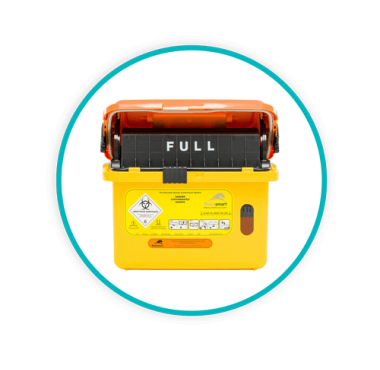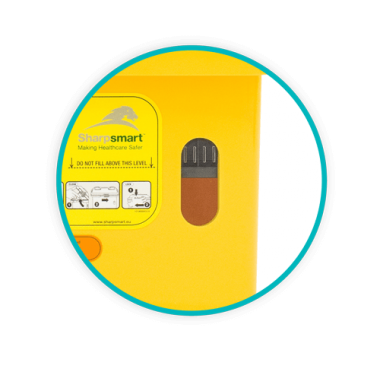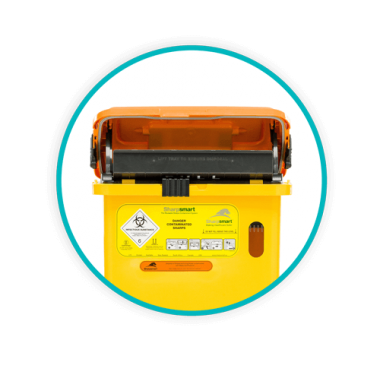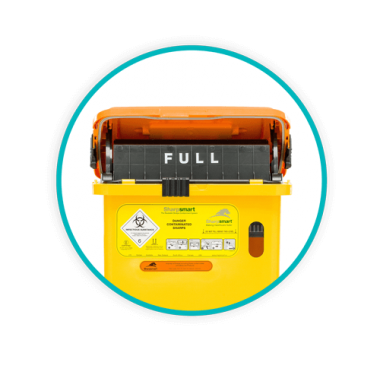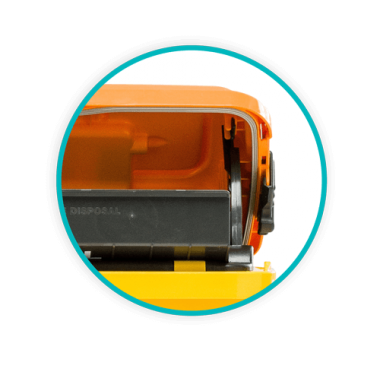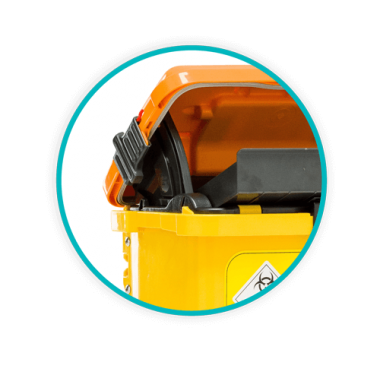Compliance Standards for Reusable Sharps Containers
The recent adoption of BS EN ISO 23907-2:2019 raises the requirements and test methods for reusable sharps containers in the UK. Sharpsmart set the standard.
For single-use containers
- In 2012 a new single-use sharps container standard was launched and adopted by BSI which superseded the old BSI 7329-1990. EN ISO 23907 Part 1 was introduced and adopted by BSI. It included globally harmonised, modernised, and more stringent design criteria and test methods than what was in the 1990 British Standard. Again, this standard did not include reference to the requirements for reusable sharps containers. This standard was updated again in 2019 and the new standard reference for single-use sharps containers is now BS ISO 23907-1:2019
For reusable containers
- During the production of the ISO single-use container standard, it was agreed by the ISO working group that a completely new standard for reusable sharps containers was required. In 2019 the BS ISO 23907-2:2019 was launched. This new standard not only covered the design functionality for user safety outlined in ISO 23907 Part 1 (single-use containers), but it also included requirements for lifespan simulation, cleaning & decontamination, microbial validation, quality monitoring, and performance testing for reusable standards. The goal of the new standard was to ensure that cleanliness and quality was inherent each time the container was reused and also to ensure that the container performed ‘as designed’ and compliantly after each use.
Clinically Proven as the Safest Sharps Disposal Solution
Backed by clinical evidence and independent peer-reviewed studies, the Sharpsmart reusable container is the epitome of safety in sharps disposal; developed in partnership with clinicians and expertly crafted to be the most advanced sharps container on the market.
With 13 safety features including needle-resistant plastic, a gravity-sensitive tray for safe disposal, and an overfill protection mechanism; it has been proven to reduce needlestick injuries by up to 87% and has earned the trust of healthcare facilities worldwide.
The evidence speaks for itself, the Sharpsmart container system is your assurance of unparalleled safety in sharps disposal.
Who are the new ISO Standards aimed at?
These reusable sharps container standards are aimed at container manufacturers and distributors as a minimum baseline for container specification, cleaning, and quality monitoring throughout the intended lifespan of the container. In addition, the standard provides a reference for all NHS procurement professionals and group purchasing organisations who can now control the quality and safety of reusable sharps containers without the ambiguity previously associated with having to reference other international standards or standards which applied only to single-use containers.
It’s important to remember…
All healthcare institutions and their senior healthcare workers should be made aware of ‘the standard to which their containers are manufactured and managed’ to provide security for their workers and to ensure that they have the correct risk management processes in place to comply with the Health and Safety (Sharp Instruments in Healthcare) Regulations 2013.
How Can Reusable Sharps Containers Be Purchased?
Reusable sharps containers can be purchased through competitive tendering processes and procurement frameworks. The reusable sharps container service can include the supply and collection of the containers, including or excluding the sharps disposal element of the service. The reusable sharps container service can be procured on a ‘per-turn’ basis (where the supplier charges by the number of containers delivered/collected) or as a fixed monthly service fee which is calculated based on the prior year sharps disposal weights and single-use bin procurement volumes.
Let’s Talk!
Your time is valuable, and we don’t want to play hard to get. You can either phone us directly on the details listed on our contact page or feel free to fill out this short form and one of our team members will get back to you as quickly as possible.
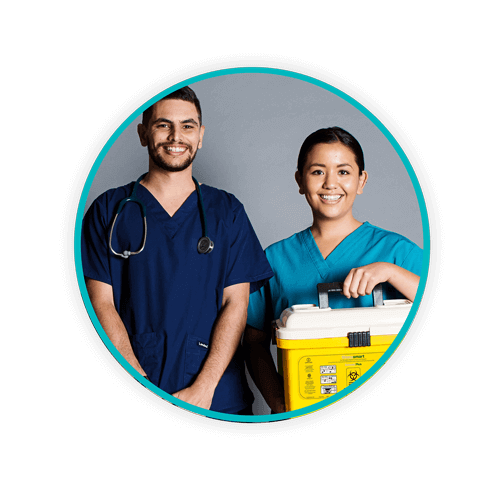 The introduction of reusable sharps containers has been widely accepted within the healthcare industry due to the inherent benefits they provide, which include a reduction in plastics manufacture and disposal, a significant decrease in CO₂e (when compared with the use of single-use containers), and in many cases, a reduction in sharps injuries as a result of the engineered safety features that can be incorporated into reusable sharps containers.
The introduction of reusable sharps containers has been widely accepted within the healthcare industry due to the inherent benefits they provide, which include a reduction in plastics manufacture and disposal, a significant decrease in CO₂e (when compared with the use of single-use containers), and in many cases, a reduction in sharps injuries as a result of the engineered safety features that can be incorporated into reusable sharps containers. 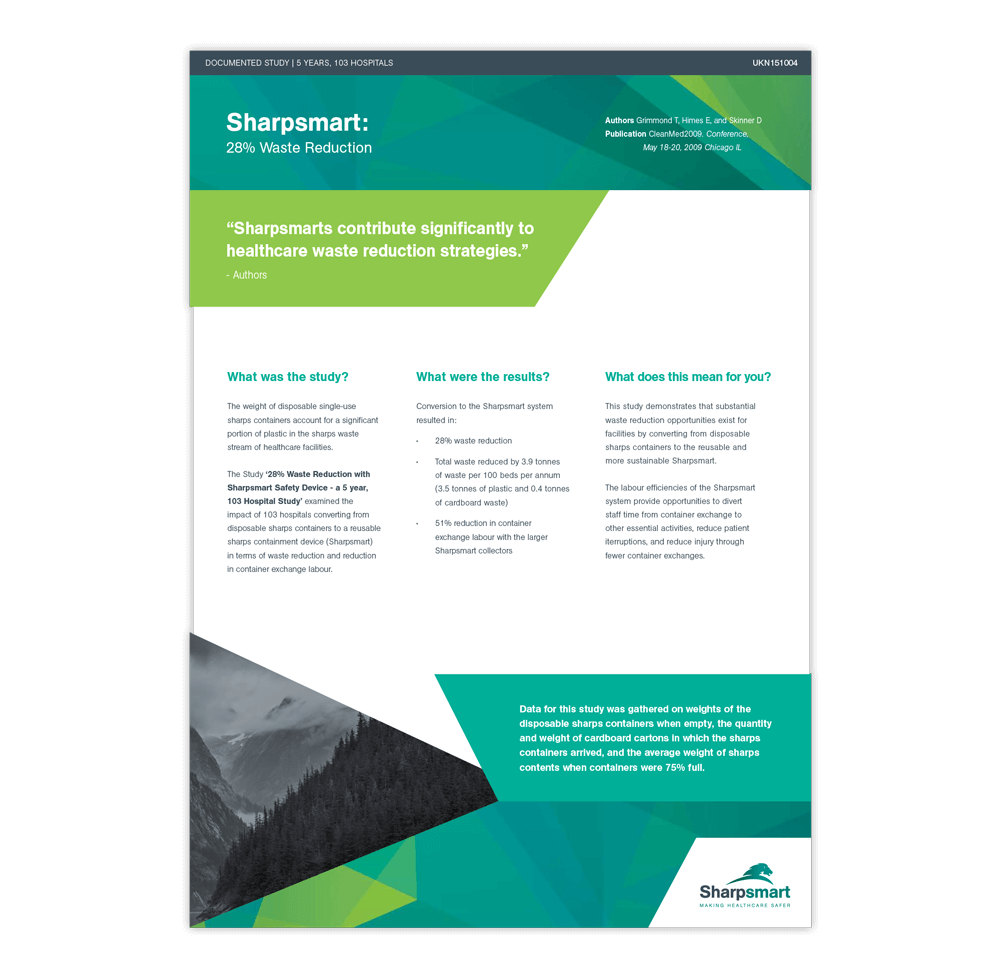
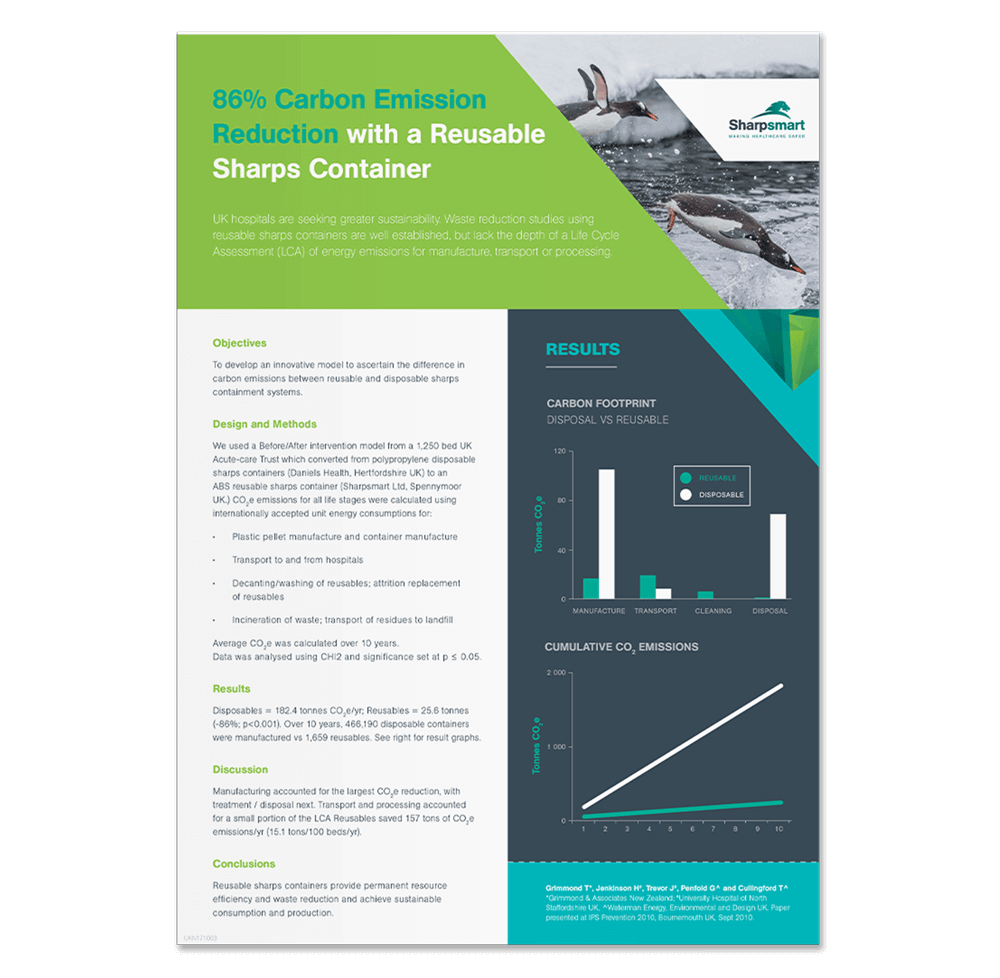
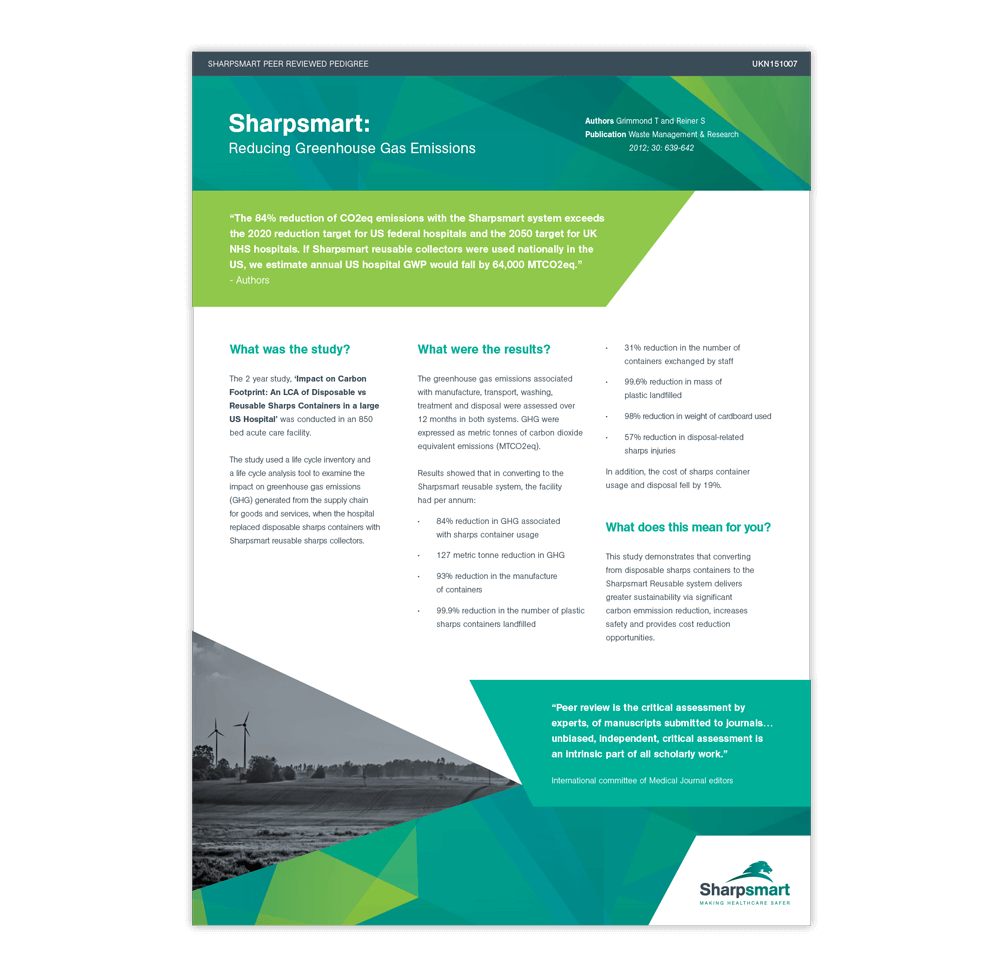



 When reusable sharps containers were introuced into the UK, the technical requirements and test methods for single-use sharps containers were outlined in BSI Standard 7320, which was released in 1990. The BSI standard was not applicable to reusable sharps containers at the time of launch, so it was typical for reusable container suppliers to mirror the tests performed within BSI 7320-1990 as a ‘claim of safety’. Whilst this was deemed acceptable by some procurement professionals, it did not go as far as other international standards (e.g., Canadian, Australian, and New Zealand standards) where additional performance testing was required to prove that reusable containers would meet the performance criteria of a single-use container throughout its reuse lifespan.
When reusable sharps containers were introuced into the UK, the technical requirements and test methods for single-use sharps containers were outlined in BSI Standard 7320, which was released in 1990. The BSI standard was not applicable to reusable sharps containers at the time of launch, so it was typical for reusable container suppliers to mirror the tests performed within BSI 7320-1990 as a ‘claim of safety’. Whilst this was deemed acceptable by some procurement professionals, it did not go as far as other international standards (e.g., Canadian, Australian, and New Zealand standards) where additional performance testing was required to prove that reusable containers would meet the performance criteria of a single-use container throughout its reuse lifespan.